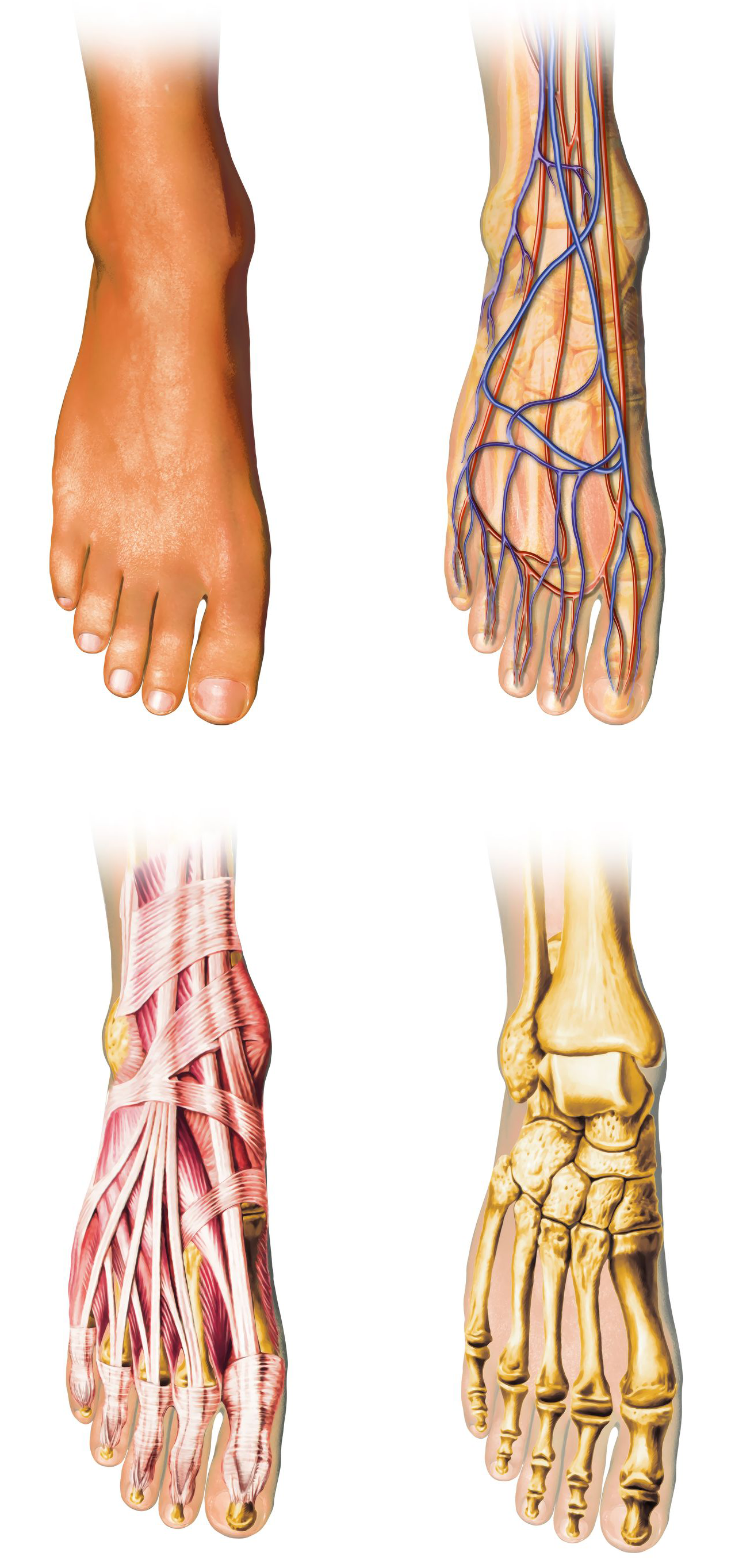•26 bones (One-quarter of the bones in the human body)
•33 joints
•More than 100 muscles, tendons, and ligaments
It’s fair to say that our foot is the most complex high stress structure in the body.
The human foot is a masterpiece of engineering and a work of art (Leonardo Da Vinci). Indeed the interplay and coordination of multiple systems required to achieve a single step is astonishing. Given this complexity it is not surprising that a profession specific to this specialized structure developed. Podiatrists are experts in all aspects of foot function and health. They are trained in Diabetes mellitus & other endocrine disorders, Diagnostic imaging, disorders of the Musculo skeletal system, Neurological & vascular systems. We also interpret tests/examination results (microbiology pathology radiology/imaging) and propose differential diagnoses.
The 52 bones in your feet make up one quarter of all the bones in your body.
2. The soles of your feet contain more sweat glands and sensory nerve endings per square centimeter than any other part of the body.
3. A 2½-inch high heel can increase the load on the forefoot by 75%.
4. Many people have one foot larger than the other, so it’s best to fit the larger one while standing.
5. The average person takes 8,000 to 10,000 steps a day, which add up to 115,000 miles in a lifetime – more than 4 times the circumference of the globe.
6. During an average day of walking, the total forces on your feet can total hundreds of tons, equivalent to a fully loaded cement truck.
7. Walking is the best exercise for your feet. It contributes to your general health by improving circulation and weight control.
8. Standing in one spot is far more tiring than walking because the demands are being made on the same few muscles for a longer length of time.

10. Arthritis is the number one cause of disability in America, including in your feet.
11. About 6% of US population has foot injuries, bunions, flat feet or fallen arches each year.
12. About 60% of all foot & ankle injuries aged 17 or older are ankle strains or sprains.
13. About 60-70% of diabetics will develop some form of diabetic nerve damage, which in severe forms can lead to diabetic lower limb amputation. Approximately 56,000 people a year lose their foot or leg due to diabetes.
14. Heel pain and ingrown toenails are the most common problems researched.
15. Tarsal Tunnel Syndrome is a very common reason for feeling pain and burning in their feet.
© 2020 Nova Scotia Podiatry Association | All Rights Reserved | Site Disclaimer | Website by Windrose Web Design
